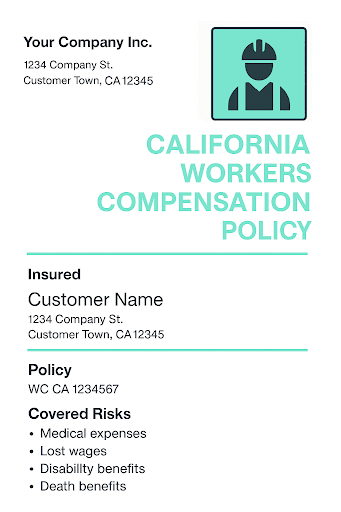Worker's Comp (California) Policy
California workers’ compensation policies outline key insured details, coverage terms, and rating information essential for policy administration and compliance. Feathery’s AI extraction engine automates the capture of the named insured, mailing address, effective and expiration dates, policy number, insurer name, A.M. Best rating, and insurer status. It pulls classification codes, payroll or exposure bases, and the insured’s experience modification factor to support accurate rating. Limits for bodily injury by accident, disease per employee, and aggregate disease claims are extracted along with estimated annual premium, applicable taxes and fees, and selected installment plan.
The engine also identifies coverage modifiers such as executive officer coverage status, reporting form usage, and audit provisions, as well as MPN participation, drug-free workplace credits, and safety program credits. Per-occurrence deductibles and other applied discounts are returned for complete premium transparency. This template is ideal for carriers, MGAs, and brokers managing workers’ compensation risks, enabling faster policy setup, accurate rating, and seamless integration into policy administration systems.





.svg)

